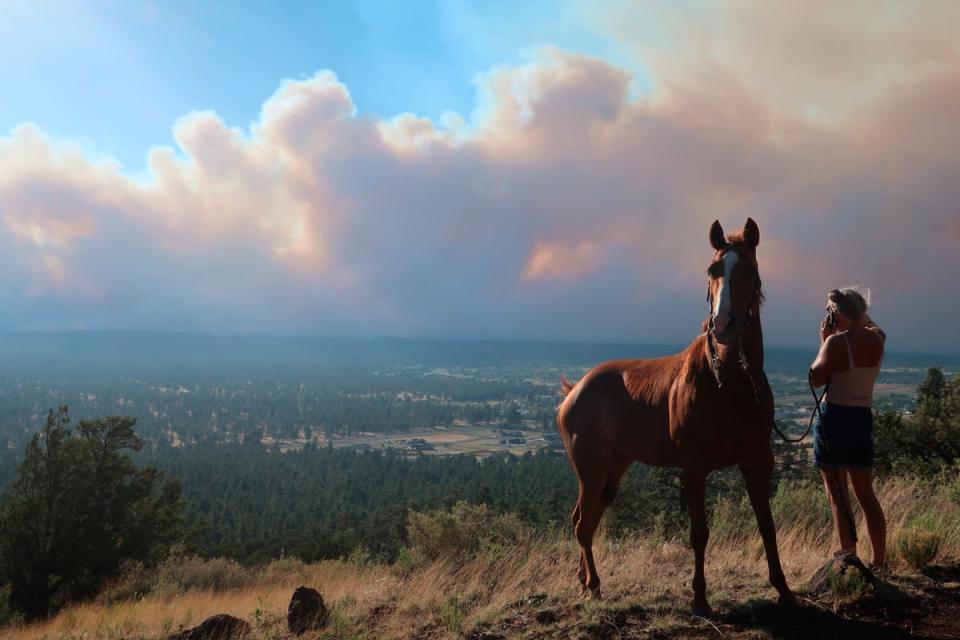Colorado blanketed in smoke as fires burn 400 miles away
Colorado residents are experiencing smoky skies - but not due to fire burning in their state.
Smoke from the Pipeline Fire near Flagstaff, Arizona has drifted across state lines and is shrouding cities like Boulder and Denver.
In areas with smoky skies, “unusually sensitive people should consider reducing prolonged or heavy exertion,” noted the Colorado Department of Public Health and Environment (CDPHE) on Monday.
The Pipeline Fire started on Sunday about six miles outside Flagstaff, in northern Arizona. It has burned through about 4,500 acres — about five and a half times the size of New York City’s Central Park — and prompted evacuations of nearby areas.
Satellite footage from the National Oceanic and Atmospheric Administration shows smoke from the blaze pouring over Colorado, and spreading even further east, past Chicago and the Midwest.
Some of you have asked about the smoky sky this morning. That smoke aloft is primarily drifting into Colorado from the Pipeline Fire near Flagstaff, AZ, which ignited yesterday.
Here's a forecast loop showing projected smoke through today. #COwx pic.twitter.com/GRiJba5vaN— NWS Boulder (@NWSBoulder) June 13, 2022
CDPHE says that while “widespread public health impacts are not anticipated at this time,” smoky skies could continue through Wednesday morning.
If visibility in an area is less than five miles, they add, the smoke has reached unhealthy levels.
Several fires ignited over the weekend in the Southwest as scorching temperatures baked the region and pushed the mercury way above 100 degrees Fahrenheit (38C).
Devastating fires have already burned through parts of the US this year, with the burning season getting off to an early start.

In New Mexico, the Calf Canyon/Hermits Peak blaze has become the largest in state history, roaring through over 320,000 acres — about 80 per cent the size of London.
And in southern California, a wildfire ripped through multi-million dollar homes in the town of Laguna Niguel.
As of Monday, 2,477,977 acres across the county had burned this year — half the size of Wales, and more than double the ten-year average of 1,082,125 acres, according to the National Interagency Fire Center.
The climate crisis is expected to increase the risk of wildfires across the US as temperatures rise and dry periods get more common.
A recent report found many homes in the American West are at serious risk of wildfire over the next 30 years, with the risk increasing as the climate crisis accelerates.

